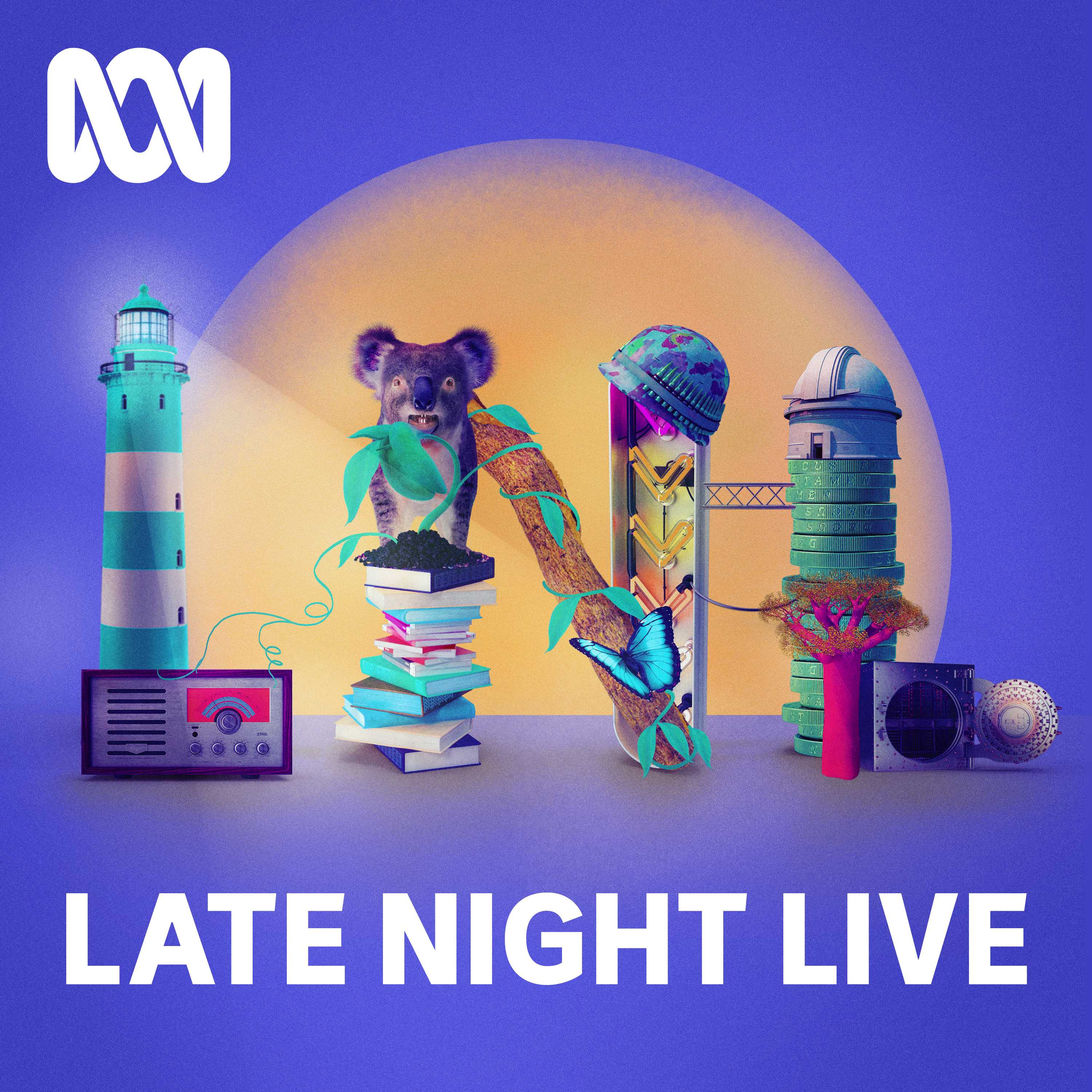
The RegenNarration
The RegenNarration podcast features the stories of a generation that is changing the story, enabling the regeneration of life on this planet. It’s ad-free, freely available and entirely listener-supported. You'll hear from high profile and grass-roots leaders from around Australia and the world, on how they're changing the stories we live by, and the systems we create in their mold. Along with often very personal tales of how they themselves are changing, in the places they call home. With Prime-Ministerial award-winning host, Anthony James.
The RegenNarration
The Land Whisperer, Part 2: At the stone circle in Burlington
We've forgotten the earth is alive, and it's killing us. That was one of the title prospects my podcast host served up for today's release. Another was 'reimagining our connection to land'. They're fair hints at part 2 of this special on-location recording with the 'land whisperer', Patrick MacManaway.
ICYMI, the full episode was played more than most in its early days, but given it was a little over two and a half hours in length, I also wanted to offer it in distinct parts, for those of you who prefer to listen to it that way. I'm glad to see that, over the last couple of days, many of you were.
So we resume here where part 1 left off, arriving at the public stone circle that Patrick was pivotal in creating, by Lake Champlain in Burlington, Vermont's most populous city. It's formally called the Burlington Earth Clock. Though you'll hear far beyond the formal presentation here.
We pick it up with Patrick's own ancestral and other connections to this part of the world, going on to clarify the legend of the sanctioning of his father's work by the Pope. Then we delve into the millennia-long story of stone circles, engage with this one together, and hear about some of the changes that have happened since it was created. And we close with the extraordinary experience that shifted Patrick's focus to agriculture, before heading to our next stop. That'll be part 3, out in a couple of days.
Title image by Anthony James. For more behind the scenes, and to help keep the show on the road, become a supporting listener below.
Find more:
To hear about the transformative insight gained at Stonehenge by Lynne Kelly, co-author of Songlines, and my guest on the third most played episode on this podcast, tune into ep.92.
Lynne's co-author and curator of the incredible Songlines exhibition, Aboriginal / Irish woman Margo Neale, was on next for ep.93.
Music:
The RegenNarration playlist (music chosen by my guests).
The RegenNarration is independent, ad-free and freely available, thanks to the generous support of listeners like you.
Please consider becoming a paid subscriber to help keep the show on the road - and gain access to a great community and some exclusive benefits - on Patreon or Substack (where you'll find my writing).
You can also donate directly via the website (avoiding fees) or PayPal.
I hope to see you at an event, and even The RegenNarration shop. And thanks for sharing with friends!
We start by healing any hurts that are present in the landscape, and then we get into communications and then, as required, we can optimize with sound or homeopathy, or biodynamics or radionics, et cetera, stem circles such as the one we're about to see, to really fine-tune like a musical instrument so that the harmonics of the space are optimum for its currently dedicated use and purpose.
Speaker 2:Mm. Perfect segue, let's go to the stone circle. Ok, what an incredibly wonderful day we have landed on. I know it's almost too good to be true. Not a lick of wind, pure sunshine, lovely temperature. I guess it's probably 20 degrees Celsius, so 70-odd Fahrenheit, lovely.
Speaker 2:You know what you were just saying there, patrick, fascinates me on so many levels. But I think immediately even of the scientific base, speaking of that cognitive linear mind, although it's grappling with how not to be limited by that too, now, isn't it? But I guess, through that, partly the science of epigenetics and how it's looking at what we carry in terms of those human stories and transmissions and wounds. Certainly, and you know, even when you mentioned light, air and sound, like getting so much more across the effects of light pollution, sound pollution, what we've come to tag like this, because there's just such an excess of these things in what we've considered good societies to build, just flooded with light and sound and and obviously fair whack of air pollution too. So it's interesting to me that the western field of science and medicine seems to be cottoning on. Do you interpret it like that too?
Speaker 1:Cottoning on to the influence of consciousness, I think it depends which way you look, aj, and possibly, possibly, which payroll you're on.
Speaker 2:Yeah.
Speaker 1:Um we, which payroll you're on? Yeah Um we. We had the Heisenberg Uncertainty Principle and the Double Slit Experiment in the 1950s already. That was 70 years ago now. And uh, the observer effect and the inevitable impact of our consciousness on circumstance and environment has sort of remained as a curiosity and an inconvenience to science rather than, I think, being fully embraced and reintegrated into our traditional awareness of the literal and real impact of intentionality, of prayer, of simple communications. Maybe it's too difficult to control that process.
Speaker 2:In some ways I wonder if indeed we shouldn't worry too much about that, like, in a sense, leave the more controlled experiment, double blind stuff, etc. To science. Just don't interpret it as the ultimate or only form of knowledge and Just say, ok, that's what that method's finding and this is what this method's finding, and you can sort of just cross notes but don't seek necessarily to bend one into the other. What do you think?
Speaker 1:I think that the world is not really divided into different sets of truths.
Speaker 2:Yeah.
Speaker 1:I think our knowledge is more concentric, and any truth needs to include all other truths, and so if we have a conflict between science and experience, then what that tells us is our science is not any more science but has become doctrinal. But the true spirit of science is to open-mindedly advance hypotheses to attempt to explain all observable phenomena, and the so-called science we have now is almost more reminiscent of dare.
Speaker 1:I say the worst of the Catholic Inquisition periods, where non-believers or non-conformists are discredited, their influence marginalized and their work and laboratories destroyed. So I'm very reluctant to give the term science or scientist to narrow technological doctrines, whereas really if a thing is perceived and observed reliably and consistently over thousands of years, chances are there's a pony in the middle of it.
Speaker 2:Speaking of which First Nations here I mean I noted before with the White Eagle Lodge. So, going back in your ancestry, there is this connection to here. I mean I don't know if it's here here, but this continent, turtle Island, interesting that you should find yourself with a second home of sorts. I mean, if you call it now another home here on Turtle Island, given that ancestry, is it a connection you felt since you've been here or experienced in any way?
Speaker 1:I felt at home in Vermont as soon as I arrived here, and it's geographically, geologically very similar to Scotland, yes, but I think there is also some kind of trail of something. A character called Chogyam Trungpa was one of the first lamas out of Tibet, indeed.
Speaker 2:We went to Naropa University in Colorado.
Speaker 1:You did Well his first effort was Sammy Ling in Scotland, and before he did that and while he was doing that he was a frequent visitor at my family's home.
Speaker 1:I was too little to remember anything about that, but there's stories of going for a walk with Trumpa and it starting to rain and sitting down and Trumpa doing his thing in a six-foot dry zone around the sitters while the rain passed over for half an hour and then, once the rain had gone away, they stood up and kept walking. This is so interesting. Well, so he did Scotland, and then he came to Vermont and he set up Karma Choling, and then he went to Boulder and set up Naropa before, I think, finally going up to was it? Newfoundland? Yeah, I can't remember. You're right, but I've done Scotland, vermont and Boulder in his footsteps. So I wonder if there isn't.
Speaker 1:Yes, you do wonder Threads of connection and resonances between sympathetic landscapes.
Speaker 2:You so do wonder. And with First Nations here, whose land are we on? Let's start with that.
Speaker 1:First Nations here. Vermont not got a good history with that. The people here were the Stool of O'Hagan, Abenaki, mahican, right there, right In the Adirondacks, on the west side of the lake Right and then down to where we've come from in the south of Vermont as well, I believe.
Speaker 1:Right. But here we have Abenaki woodland Indians and they were never recognised and a treaty was never made with them. They were acknowledged only, I think, 10 years ago, under Governor Peter Shumland's period in office, and recognised that they existed which is sorry but wonderful, at least something that wasn't there before.
Speaker 2:Yes, yeah. And for you, any connections in your 40 years here?
Speaker 1:Very few. They mostly quietly do their own thing, keep to themselves because they don't have designated lands. A lot of them here took French names and disappeared into the woods Is that right? And just sort of became invisible.
Speaker 2:I think they got quite heavily Christianized to some degree and of course the hunting and gathering and permacultural lifestyle that they enjoyed is not possible now with land ownership as it is currently so it's a very important, a very sad story, yeah, and just while I think of it, speaking of the christian element, somebody told me that your dad ended up doing work for the pope too is that right?
Speaker 1:yes, uh, uh, not working directly for the Pope. So Dad was doing his healing and mediumship around the edges and the army was very tolerant and found it quite useful. But he ended up as a NATO super specialist in amphibious landings and taking beachheads NATO super specialist in amphibious landings and taking beachheads. So he would be loaned around the NATO countries to help train their commando and assault forces. And his favourite posting, which happened three times, was to Italy because he was big-time whiny and foodie and that was where he loved to be. But as a visiting dignitary, uh, but technically I guess, episcopalian church of england, yes, um, the regimental padres didn't want to tell him he couldn't do this in a catholic country because of the circumstance, and so, rather than saying no, they kept. Each time he went they passed the buck up, uh to somebody in higher office and on three occasions he got um approval from the papal office that it was fine, he could do his, his healing as a visiting military officer and that that wouldn't upset sanctioned by the pope he was.
Speaker 1:He was rather tickled uh, I think uh at that, but it obviously was very circumstantial.
Speaker 2:Yes, it's interesting though, when we think about you know you drew the analogy to the inquisition and and you know my upbringing, my father's before me, and what we're learning in Australia now through various royal commissions about the sordid institutional behaviours. Again, bless the people amongst us, my uncle, who went with my father for a while before my father left Christian Brotherhood. My uncle saw it through till his death and did it beautifully and affected lives. I still hear back from people in Perth wow, your uncle was a legend, you know, shaped my life. That sort of thing. Beautiful stuff's there and it's why people still believe in it. But, my goodness, the institutional abuse to levels that you don't even want to know about. They're so harrowing just to even imagine, let alone experience.
Speaker 1:Why and how we do what we do is one of our deep questions. Horrifying what happened in Australia, and that was one genocidal land grab. Scotland we had like 12.
Speaker 2:Really.
Speaker 1:Because we had whoever the Neolithic farmers were. And then they get kicked out by the Bronze Age guys, and then they get kicked out by the Iron Age guys, and then they get kicked out by the Romans, and then they get kicked out by the Vikings, and then they get kicked out by the Anglo-Saxons, and then, when there's nothing better to do, they fight amongst themselves over distinctions of religion, whether it's Protestant, catholic or the many sects of Protestantism, and then, finally, they burn their own people off the land for an agricultural revolution and put them on ships and substitute people for sheep.
Speaker 1:So Scotland, almost more than any nation, has perfected the art of, you know, genocidal land grabs.
Speaker 2:But what it is in our, that part of us, hey, and then that part I mean this relates to us all carrying indigeneity, let's say, for want of a, of a word and the wounds of these experiences. I mean this is where australians came from in the first instance of settlers right was the uk. Um, mine irish and english and many others scottish, so that we're connected to this and I guess, in that sense, we share so much, don't we?
Speaker 1:for the best and worst of everything, we share so much as humans if we do, it really is a global family, but that the separate way, the separation away from animism. Looking at sustainable versus non-sustainable cultures I speak of this first up every time I lecture. So this is totally. But looking at the paradigms between sustainable and non-sustainable cultures, it seems to me there's just two things that we've gone astray with, um. The first is our relationship with time and um.
Speaker 1:Sustainable cultures run circular time, and so this is obvious for farmers it's always going to be spring, it's always going to be harvesting. It's always going to be spring, it's always going to be spring. It's always going to be harvesting. It's always going to be spring, it's always going to be harvesting. And so you're always repeating a now moment, and every time you do it you get it better. Maybe we put a little more fertilizer or a little more moisture or a little more compost, or we wait a little, or plant the rows at different spacing. So we're always doing the same thing better, but there's nowhere to go, there's nowhere to run, there's nowhere to hide, it's just it's going to be now again. Next time it's now, and so circular time puts you into present moment and brings your awareness very much into what's happening around you and how to relate to it in an optimum fashion.
Speaker 1:Linear time puts us into a deferment pattern where we believe that what we really want is never going to be here now, but it's going to be there then. And so we chase down the road to try and get more money, more power, more sex, more notoriety, more whatever it is that our insecurities drive us to want more of. But it takes us out of the here and now and it projects us into some anticipated future version of ourselves. It also, in a linear model, holds the fantasy of eternal growth, and so, as we know, our country's economies are the health is supposed to be reflective of the rate of growth. So the economy is healthier the faster it's growing.
Speaker 1:But if we walk that out and if we put that into a medical context, that is, by definition, cancer. So something that eternally grows without, you know, being matched, mirrored, integrated into its environment, is cancerous. So by being on linear time and linear economy, we've created cancerous relationship with our landscape, literally. But there's lots of different things we could do about that, but it's more a question of the thinking about that. Um, lovely classic movie. Uh, groundhog day, yeah, is exactly that that's why it's the more he has to live the same day over and over again.
Speaker 1:he just he gets better at it until he's having the best day ever and then time starts moving for him again. So that's the most classic circular time sort of exposition. And then the second thing is whether or not we have an awareness of the animate nature of our environment. Environment, because if I know that I can change the quality and volume and standing height of water in a well by attention and prayer, if I know that a dry spring will come back to life, if I know that I can have influence on germination rates, biological pest management, if I know that I can actually have an influence with the weather, all the questions simply disappear. It's not a question of whether we can do these things. It's a question of whether we do do these things and whether we use them to our natural advantage.
Speaker 1:And it's not a question of hunter and gathering versus agriculture, because we had 6,500 years of fully sustainable agriculture in Europe with all of the animism deeply and richly built into it. So it's not a question of we can be completely sustainable agriculturally. Agriculture isn't a non-sustainable practice. We practice agriculture now in mostly non-sustainable ways, but that's not an agricultural issue. That's an issue of practice. But again, if you're aware that your land is animate and listening and responsive to you, you simply make a different set of decisions than if you think it's really just a sterile petri dish that you've got to get the chemistry right to grow the thing on the agar plate.
Speaker 1:So whatever the practice is, whatever the details on the agar plate, so whatever the practices, whatever the details on the ground are, I think if we can re-embrace circular time and animate awareness, then really we've got everything that we need because we're so clever with our technology. Well-used technology fantastic, good Lord. The convenience with our technology. Well used technology Fantastic, good Lord. The convenience. What we're doing right now? What we're doing right now, the electronic medium, the ability to move around the world and share thoughts and ideas with each other, but the more I look, the more I'm sure really the circular time and animate awareness, those are the things that really separate us from sustainable versus non-sustainable. And I'm very concerned about the sort of indigenous label, because obviously indigenous doesn't mean anything other than that you were born there. We tend to have a romance of hunter-gatherer societies versus our own, but that's associating with agriculture, with disconnection and landscape, which is is not at all true very interesting.
Speaker 2:for a while now it's occurred to me as almost a bit of a chuckle that we might have left animistic thought, because then by definition we'll have chosen inanimistic, like not alive dead. So it sort of says it itself. It says it itself. If we paid attention to the language, but let's turn to this physical manifestation.
Speaker 1:Let's look at this physical manifestation. Look at this physical manifestation. So, um, historically, agriculture in europe starts about six and a half thousand years ago a little bit earlier, I think in brittany, maybe pushing back to eight thousand, but certainly it's going in the uk by 6,500 years ago. And what happens initially is they don't seem to quite get their land management down. The bones after a while don't look so good, the teeth don't look so good on the archaeological record. And then they engage in this megalithic project of putting stone circles and henges and standing stones across the landscape. And as soon as they've done that, all of a sudden the teeth look better and the bones look better, and you're finding traded goods from far off places which would suggest an excess of food as the basis of, um, a real economy, and so when was this?
Speaker 2:when are we talking?
Speaker 1:uh, we're talking.
Speaker 2:So these things start getting built around 3000 bc, about 5000 years ago and it's and you know, my son again quipped earlier this morning oh, like stonehenge.
Speaker 1:So yes, to an extent I mean it's the sort of yes, well, thousands of these get built across europe and they're clearly built by farmers in service of landscape fertility. And significantly, a study done in the 90s in south america kajik and um, forgetting gentleman's name, uh, stone of knowledge and Plenty was the book they wrote. They weren't mystics or dowsers, but they saw clearly that these stone circles were purposeful to an agricultural community. So they were measuring geomagnetism and finding always a stronger geomagnetic background in pyramids and stone circles and they extrapolated why this would have effect anyway, one of the experiments they did they took indigenous south american corn, split it into two samples. One half the sample went into a pyramid for 72 hours before planting and the other sample did not, and then they got an 80 to 85 germination rate on the pyramid corn, 25 to 30 percent on the non-pyramid corn. Even rate of growth, cross-pollination with the pyramid corn, uneven, poor growth on the non-pyramid corn. Net on net they got a 300% yield increase for pre-germination energizing of their seed. And University of Vermont. Some years ago the Agricultural Extension Program did a trial in rice growing as a potential crop here in Vermont dryland rice and they gave the same samples to five farms, one of which was a farm that I was working with and we built a mini stone circle and were doing all the germination starts in there and the other four farms in the trial got 25% germination rate on their rice and in the stone circle we got a 100% germination rate. So other stories like that and now on farms, stone circles, australia and elsewhere, we see how we can start to take advantage of the energies in the landscape. I think a stone circle is like a magnifying glass, I think it acts as a geomagnetic lens, and typically the stones that are chosen to be used are high in paramagnetism high in paramagnetism, so they're acting in a sort of focusing and concentrating way to, I think, optimally charge seeds and such interesting this one is obviously in public park, so this does not have an immediate agricultural purpose, although people do bring their seeds here, particularly in springtime, before gardening.
Speaker 1:What we do do here, amongst others, it's an open space for the public and people use it for weddings, they use it for yoga, they use it for kirtan, they use it for picnics. It's tremendously popular and you helped bring it in. Yes, popular. And you helped bring it in. Yes, this I. I trained in the construction and uses of sacred space in the early 90s and then a an interest group of 30 of us had done 10 years of these things on private land but we wanted to bring one to the community and so this was a non-profit volunteer job. I did the location and the orientation and the basic site map and then my friend Ivan Macbeth chose the stones from the quarries and supervised the installation and we had landscapers and all kinds of help doing it and the city was the city was up for it.
Speaker 1:They lent us equipment. We had an opening ceremony, cutting the ribbon, with the mayor giving it to the city officially. So this is cool. I wouldn't have necessarily taken that for granted we called it an educational arts installation, and so we we use neutral language about it.
Speaker 2:That didn't make anybody uh worried yeah, um, and is there a particular way we should engage with it now?
Speaker 1:so if we step into the middle here, we've called it an earth clock. So it works in two ways. Firstly, this is what's called an analemic sundial, which means that you're the gnomon, and because the elevation of the sun changes through the year, you need to move where you stand. So you can see it's marked out month by month. So we're about September 1st. So if I stand at September 1st I can see that this is saying I'm just a little bit before noon solar time and we're on eastern summertime. So the time actually is, by our clocks, 12.30 by our clocks. There we go, so that's fun.
Speaker 1:And then what's happening here, also marked out on the stone, is that these five stones show where the sun sets on the mountain ridge behind the lake as the year goes on. So it sets this one at winter solstice and then this one is 1st of February, spring equinox, march 21st, beginning of May, midsummer solstice, and it comes back. So beginning of August, september 21st, beginning of November and back to winter. So this gives us the pendulum swing of the sun through the year and it's supposed to work. For a 5 foot 8 person, I think that the the sun just sits like a candle flame on top of these on the horizon at those times. So it's plugged into its astronomical environment.
Speaker 1:This stone is aligned to the deepest point in the lake to honor our lake monster champ, and then this one with a square profile is aligned to an original abenaki sacred site on ilamot, further up the lake. This is north and then this is south. Okay, and these ones are all then at 30 degrees intervals, which allows astronomical observation. 30 degrees is our way generally of dividing up the time. So the idea of this, we put it in as a peace park under a banner of circles for peace, for peace based on the understanding that, by the simple witness of the cycles and rhythms, of nature.
Speaker 2:Inner peace is restored in the observer. So it's almost what you're saying before time and animate time thinking yeah, there you are we did have.
Speaker 1:Every year we have a lake blessing at midsummer. This is a very shallowly shelving sandy beach. You can walk a long way out before you get waist deep. So with the Green Mountain, druid Order and various anybody who wants to come midsummer, we bring a great cauldron of water and we put it here and then there's singing and dancing and blessing and petals, and then the cauldron gets carried and poured back into the lake.
Speaker 1:And on one occasion, uh, many years ago now, uh, dr remoto was with us and did before and after photographs of that really, and that all worked just the way. It was with us and did before and after photographs of that, and that all worked just the way it was supposed to. And also at the time we were getting algal blooms on the lake, I think primarily because of nitrogen fertilizer runoff from agricultural land. But once we started blessing the lake, the algae all went away and we were really we were allowed to go and swim again. That's interesting. They were also cutting back on the fertilizers and the city was managing water runoff and but glad to hear it.
Speaker 2:It was because an alternative response would be oh, let's pump the nitrogen.
Speaker 2:If you're going to clear it, no worries well it all works together yeah, yeah, good, ideally, um, you know it was visiting stonehenge that caused an australian researcher by the name of ling kelly to investigate the song lines in australia she's an aust Australian and then in other parts of the world effectively the same sort of methodology and she ended up writing a book called the Something Code. I remember her because she wrote a book called Songlines with an Aboriginal woman and it was amazing and it's become like the second or third most popular podcast ever as well. Just seeing the similarities and overlaps yes, again, over the thousands of years that you were describing. Yeah, everywhere.
Speaker 1:Now on the pilgrimage routes, the song lines of Europe. Henry VIII bans pilgrimage. Is that right? Earmarks people so that they can be identified if they're going out of county.
Speaker 2:It's interesting how power has occasionally done that. Yet we're talking about the armies, that power when they feel the utility, or even for the same reasons, perhaps for power.
Speaker 1:I think that's the thing. Yes, once you realise you've got some kind of power, do you concentrate that and manipulate it, or do you share that for community benefit?
Speaker 2:The age-old mythological story as well. So for you, then, you've ended up so involved with agriculture. I can imagine the link between what you were realizing before to that, but how did it actually happen? How did you get so linked to agriculture?
Speaker 1:yes, I think it was probably always in my stars, aj. Uh, probably literally, my parents had my astrological chart done as soon as I was born. Probably always in my stars, aj. Probably literally, my parents had my astrological chart done as soon as I was born. Those kinds of parents, and at the end the astrologist's comment is I can't tell whether this child will become a doctor or a farmer. So I kind of reckon I was born to do something like this. Yeah, I reckon I was born to do something like this A hybrid yeah.
Speaker 1:In circumstance. What I realise now is mum was really really really good at talking to plants and animals and landscape in ways that I so took for granted that I didn't really see it happening and negotiating with the birds which trees in the orchard they could take and which they needed to leave, and no rabbits or moles dared venture into our garden. But for me I was more on a human health, environmental trail. But what happened was over the first 10, 15 years of my practice I was getting all this feedback. When I got somebody's home space nicely clear and tuned up and balanced, then they would tell me, and the cherry blossomed for the first time and we got fruit off the apple for the first time, and all of a sudden the chickens are laying eggs like they've never laid before.
Speaker 1:And so, even working with domestic, I was getting more and more feedback on the animal and plant impacts of the work. And then here in Vermont, of the work, and then here in Vermont, farmers who came on dowsing workshops started asking me to work on their properties, and the first ones were dairy farms. I think the very first one was a dairy farm and then as soon as I worked on the farm, they won Best Milk Award in Vermont and I think they got it seven years in a row. Wow, do you want to drop a name? Probably for client confidentiality.
Speaker 1:Okay, that'll need to remain anecdotal, but I saw the impact on on dairy of working and then realized that that was one of the most common things that dowsers do in germany is to work with dairy herds, because cows are very sensitive to environment, and if they're getting mastitis or low fertility or difficulty with calving, that's one of the first places that you would look to see and check whether there was, particularly if it's, uh, isolated to one part of the farm. More and more, uh, even here in vermont, cattle are mostly living indoors and the forage is brought in to them as hay or silage, so they don't really have so much capacity to move around, and if you put them in an atmosphere that isn't good for them, then it'll show consequential.
Speaker 1:So I got working with dairy more and more and then I had an opportunity to work with a mixed arable farm in Scotland over a number of years and did a lot of experimentation. And then gradually word got out and I started publishing results and that was what came to RCS's attention. There you go.
Speaker 2:Should we walk back? Yeah, so yeah, walking back along the lake here now back towards the car to go to our next destination. It just occurred to me you know what you were saying before as we look out on the lake and you comment on how great it is for kids because it's so shallow, and and then I thought, oh yeah, and if it's getting cleaner, awesome. And then I thought there's another story of something getting better and there's so many stories of things getting better.
Speaker 1:Everywhere, everywhere. So much positive energy, so much positive intention. I think people are hungry for a life of soul. Frankly, I think that's perhaps part of what's happened. We talked about circular consciousness and animism, but it applies also to ourselves.
Speaker 2:yes, so so much deep desire to live in ways that satisfy and fulfill and allow us to be truly an integrated part of the family of things yet there's this other narrative which sort of has its own a spiral that gets sort of more worked up and more worked up, and I'm and I'm talking from very genuine care and concern to many people. I know that see the climate crisis and the biodiversity and then Gaza, and they might argue here, if they're with us, that they are bigger forces than the spots we're observing where stuff's getting better. What do you think?
Speaker 1:I think, historically, we've always had an element in humanity that seeks to dominate and control and concentrate power. Whether it's Chinese emperors or Genghis Khan or Alexander the Great, or fill in the historical details we seem always to have been perhaps moved by a sense of scarcity and moving towards what we conceive of as a more secure future for our family and tribe and community. So whether it's any different or worse now than it ever was, I'm not sure, or whether the names have simply changed, but I'm very encouraged. And actually, in terms of the physics of consciousness, when we're in a grace state, when we're in an unconditional love state, our electrocardiographic and electroencephalographic spectrum analysis shows increasingly rich golden ratio proportion wavelengths within it, and the golden ratio is a proportion where waves meet each other without creating disturbance or diffraction.
Speaker 1:Any other proportion of wave interface creates distortional patterns when they come together, but golden ratio allows waves to stand and sustain in the presence of others. The point of that is that it's the most efficient way of propagating energy, and so love, in fact, is a more efficient waveform than fear and hatred. And so if you were to go pounds per square inch, pounds per square inch, with equal intensity, love always wins over fear and hate, because it's actually a more efficient and sustainable waveform, and so I'm reassured that the hobbits will always ultimately win out over the forces of Sauron, because their simple, wholehearted love is ultimately indomitable. And I'd like to observe that the hobbits were the peaceful farmers and they were just trying to keep things nice in the shower, and so all of the trouble around them with the great and mighty was like a storm that washed through, and then they went back to growing vegetables and smoking their tobacco brilliant.
Speaker 1:On that note, let's head to our next stop, ok, okay, so I'm going to take you next to a woodland labyrinth.
Podcasts we love
Check out these other fine podcasts recommended by us, not an algorithm.

Team Human
Douglas Rushkoff
7am
Solstice Media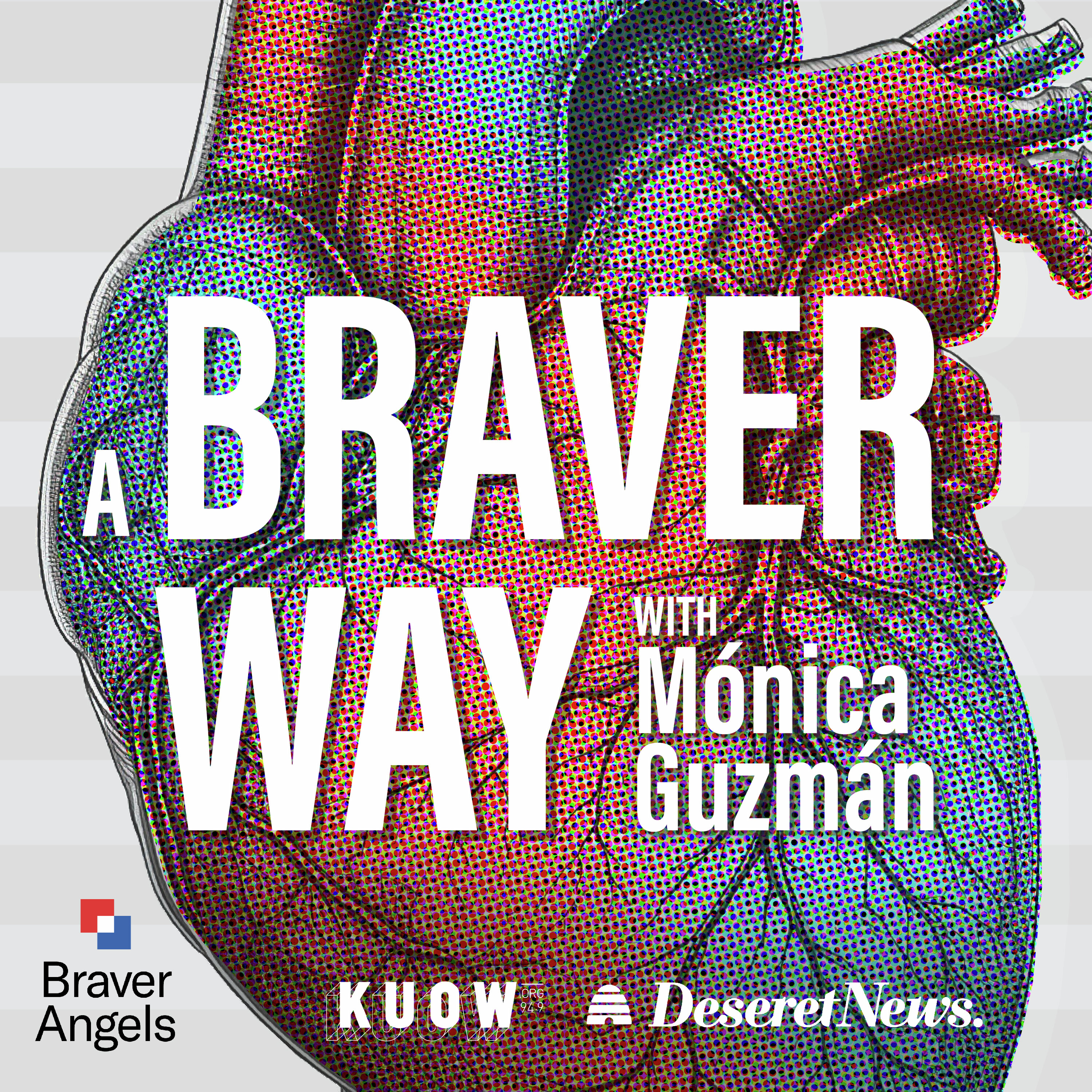
A Braver Way
Monica Guzman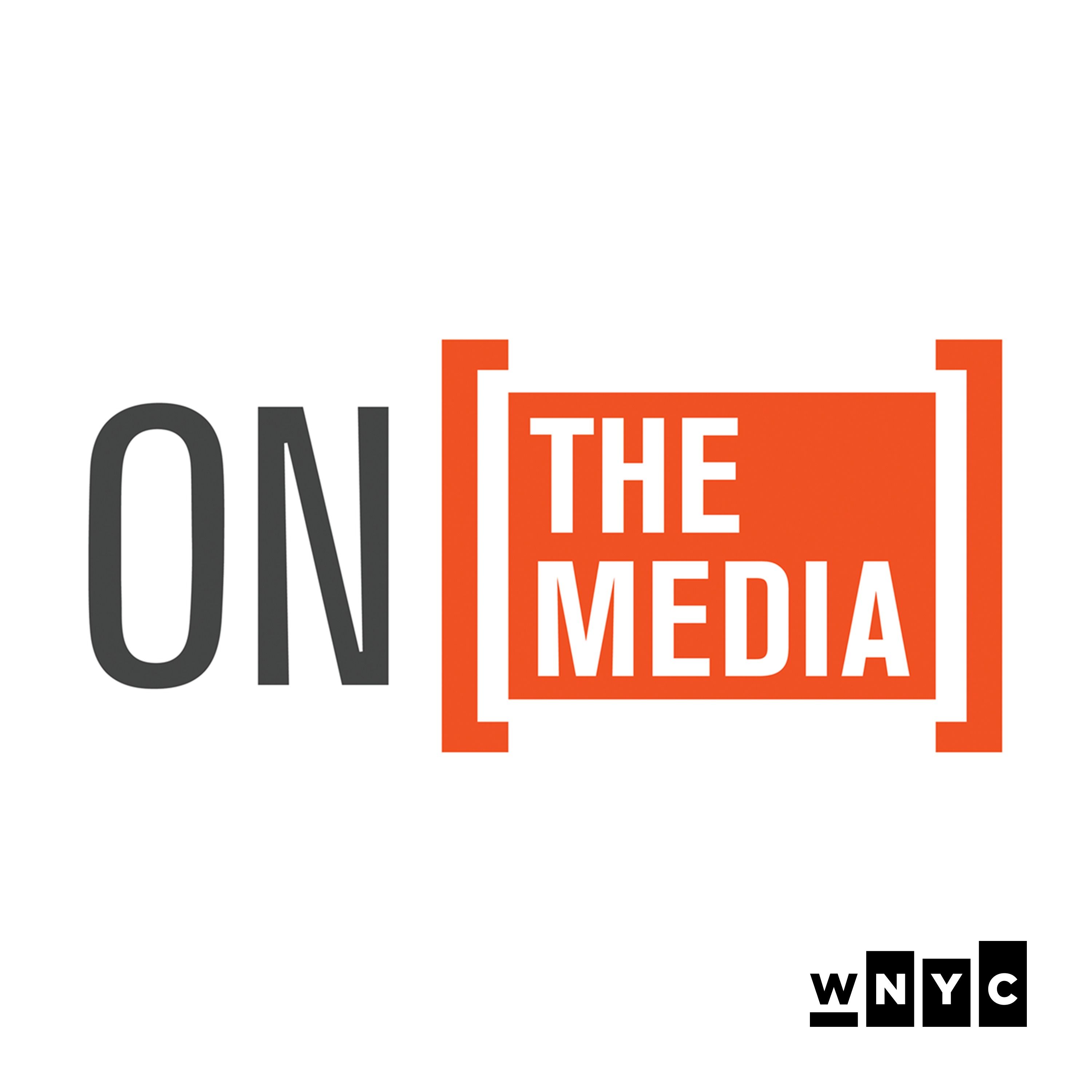
On the Media
WNYC Studios
Aboriginal Way
Aboriginal Way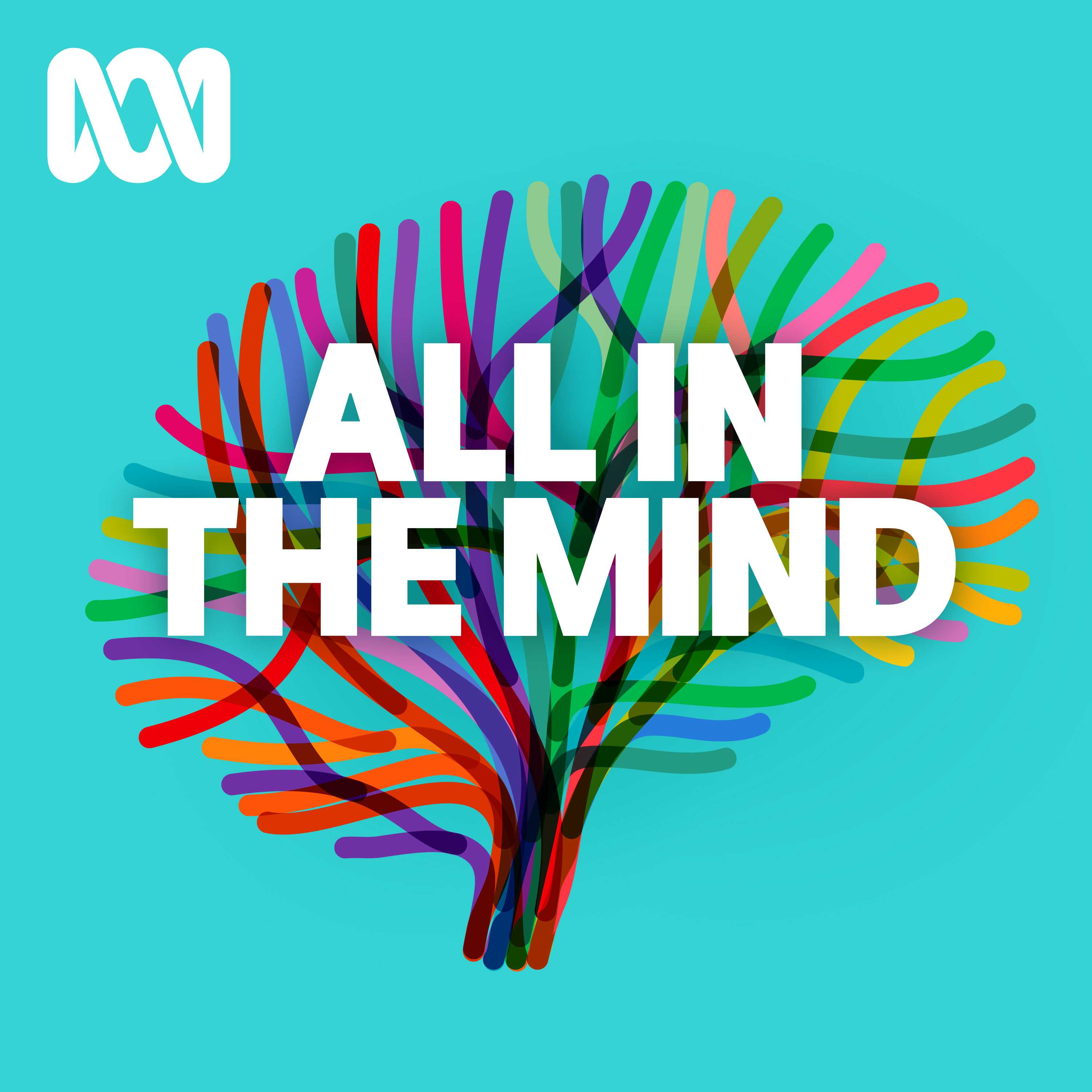
All In The Mind
ABC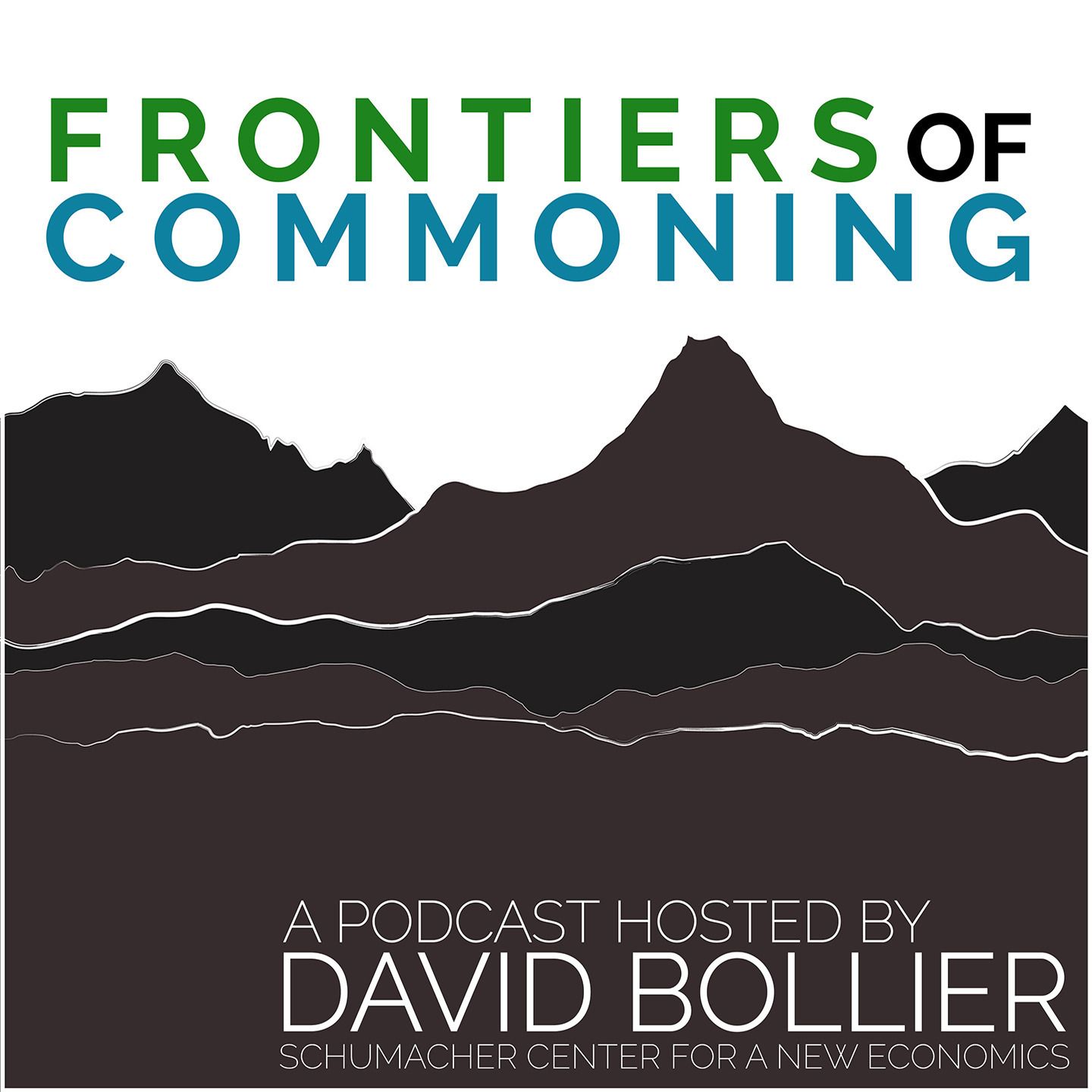
Frontiers of Commoning, with David Bollier
The Schumacher Center for a New Economics, David Bollier
Futuresteading
Jade Miles
The Lindisfarne Tapes
The Schumacher Center for a New Economics
Buzzcast
Buzzsprout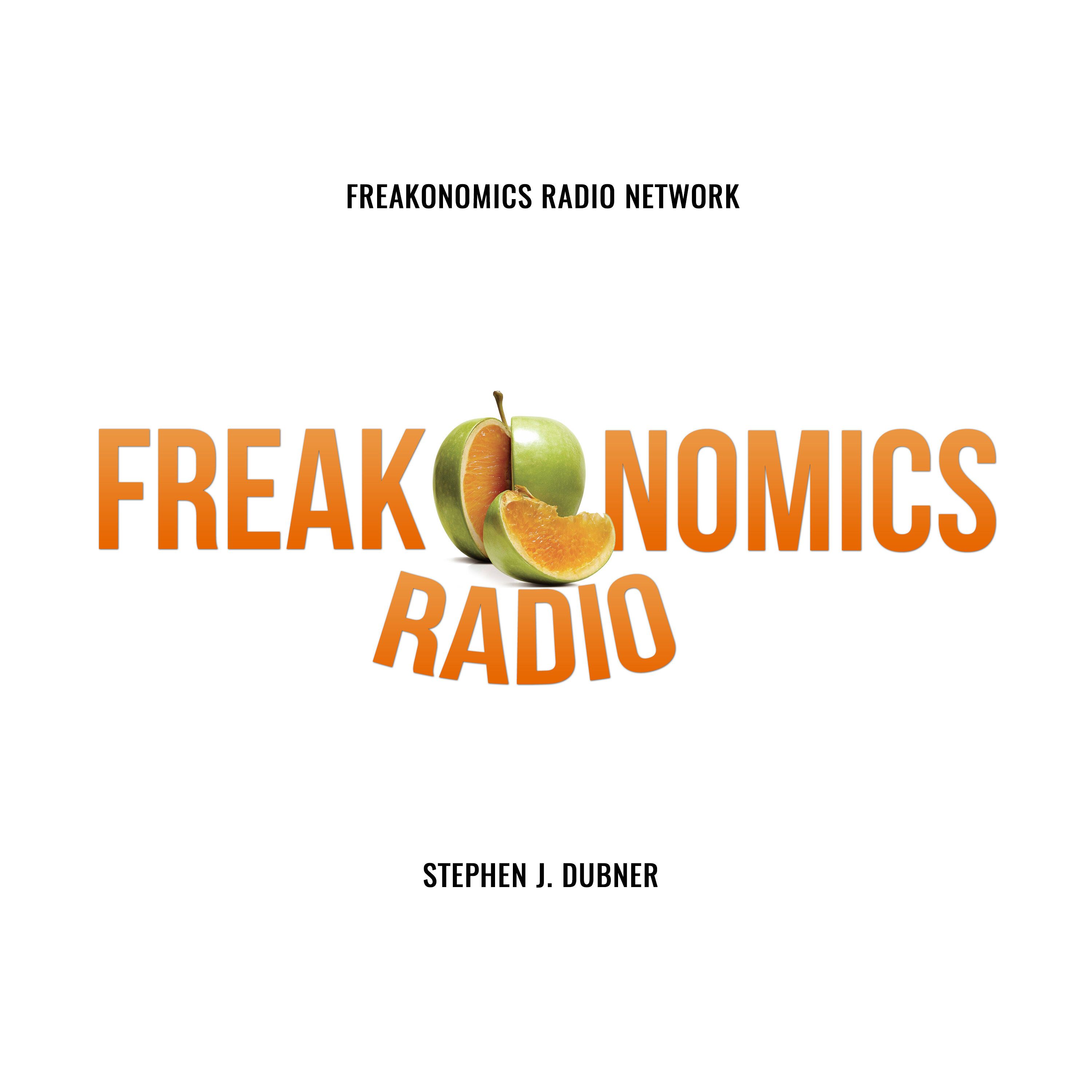
Freakonomics Radio
Freakonomics Radio + Stitcher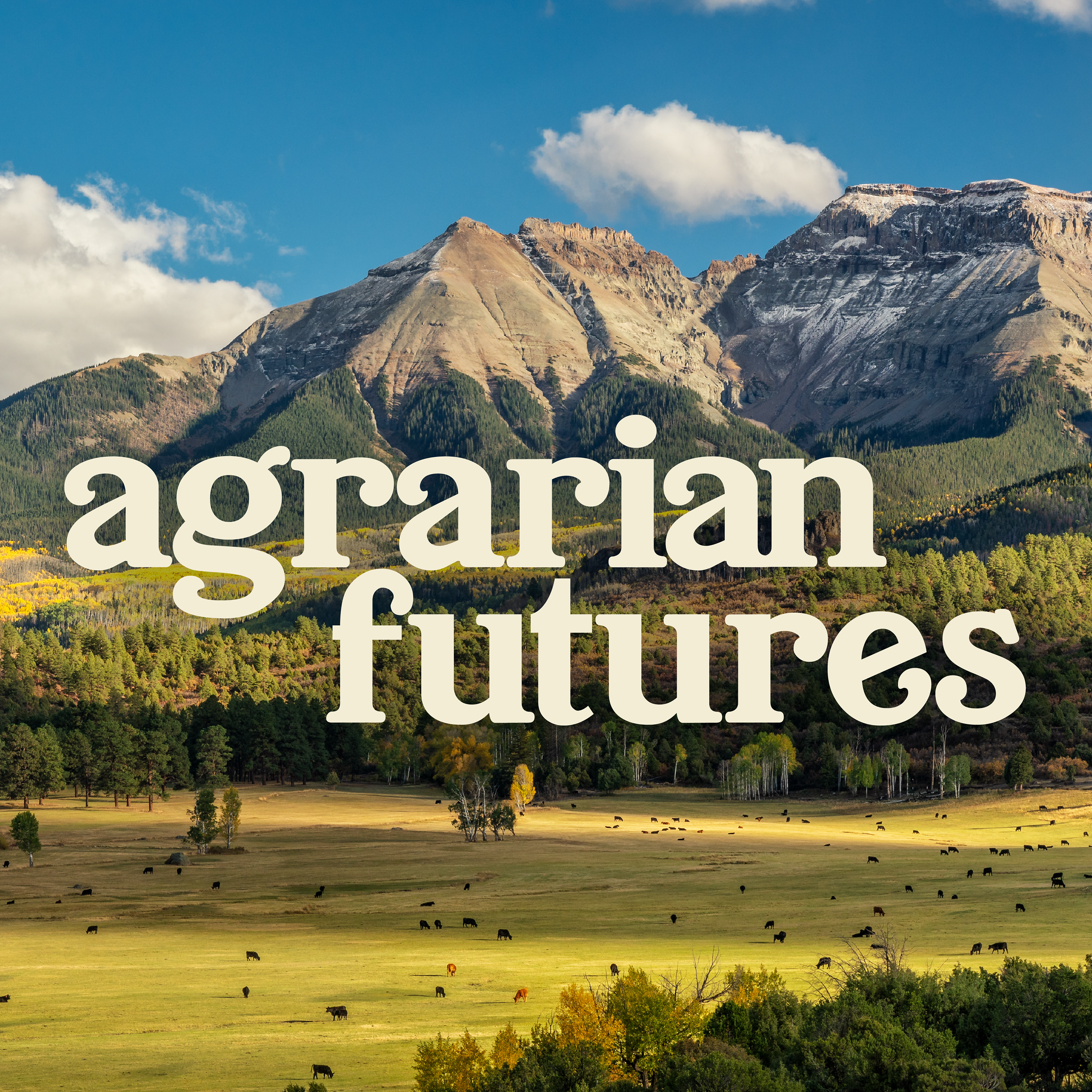
Agrarian Futures
Agrarian Futures
Mountain & Prairie with Ed Roberson
Ed Roberson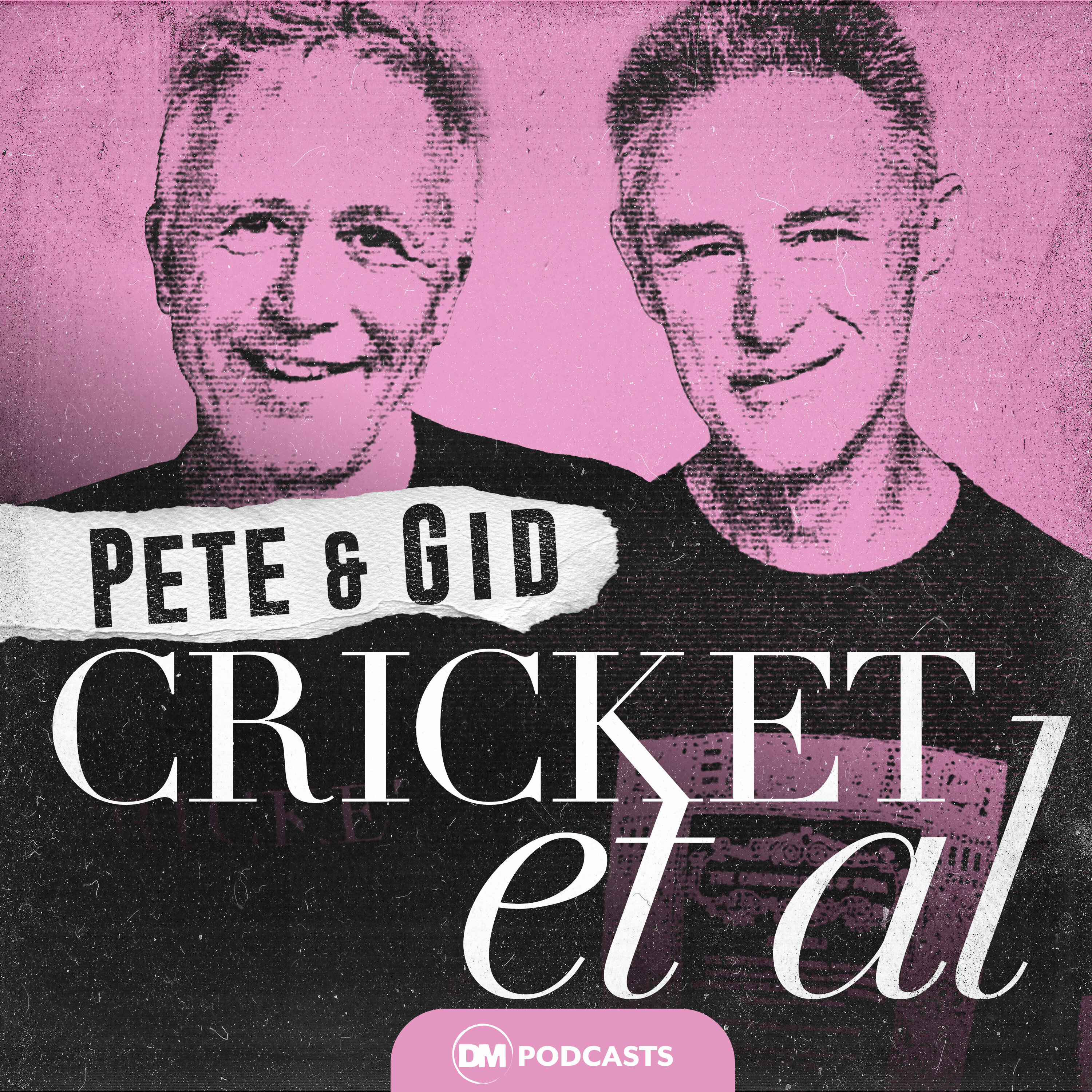
Cricket Et Al
Cricket Et Al
Broken Ground
Southern Environmental Law Center
Lost Prophets
Elias Crim & Pete DavisConversations
ABC

